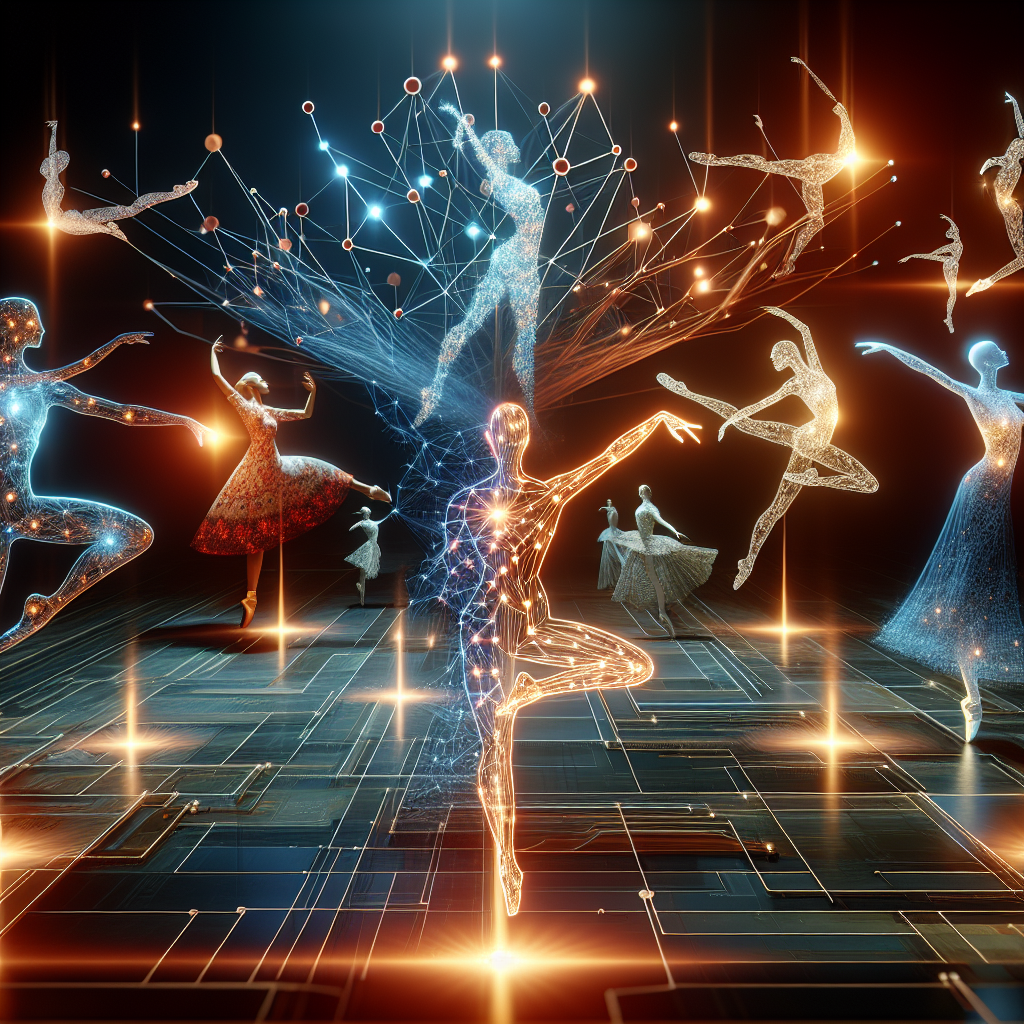Artificial Intelligence (AI) has revolutionized many aspects of our lives, from healthcare to transportation to entertainment. One area that is now being explored is the intersection of AI and dance. By using AI technology, choreographers and dancers are able to create new and innovative movements and choreography that push the boundaries of what is possible in the world of dance.
Exploring Movement with AI
One of the ways in which AI is being used in dance is to explore new movement possibilities. By analyzing large datasets of movement data, AI algorithms can identify patterns and trends that humans might not be able to see. This can lead to new movements and choreography that are both innovative and exciting.
For example, choreographer Wayne McGregor has been using AI technology to create new movements for his dancers. McGregor worked with Google’s Arts and Culture Lab on a project called “Living Archive,” where AI algorithms analyzed thousands of hours of McGregor’s choreography to identify patterns and trends. The result was a new movement vocabulary that McGregor and his dancers were able to explore and incorporate into their performances.
Another example is the work of choreographer Ollie Palmer, who has been using AI algorithms to generate new movements based on the movements of his dancers. By analyzing the movements of the dancers and using AI algorithms to identify patterns and trends, Palmer was able to create new movements that were both unique and visually stunning.
Exploring Choreography with AI
In addition to exploring new movements, AI is also being used to explore new choreographic possibilities. By using AI algorithms to analyze large datasets of choreographic data, choreographers can identify patterns and trends that can inform their creative process.
For example, choreographer Jonah Bokaer has been using AI technology to create new choreography for his performances. Bokaer worked with a team of AI researchers to develop an algorithm that analyzed the movements of his dancers and generated new choreographic sequences based on those movements. The result was a series of performances that were both visually stunning and technically impressive.
Another example is the work of choreographer Rebecca Fiebrink, who has been using AI technology to create interactive choreographic systems. Fiebrink developed a system called “Wekinator” that uses machine learning algorithms to analyze movement data and generate new choreographic sequences in real-time. This allows dancers to interact with the AI system and create new movements and choreography on the fly.
FAQs
Q: How does AI technology analyze movement data?
A: AI algorithms analyze movement data by breaking down the movements into individual data points, such as joint angles, velocities, and accelerations. These data points are then fed into machine learning algorithms that can identify patterns and trends in the data.
Q: Can AI create movements that are unique and innovative?
A: Yes, AI technology can be used to create movements that are both unique and innovative. By analyzing large datasets of movement data, AI algorithms can identify patterns and trends that can inform the creative process of choreographers and dancers.
Q: How are dancers and choreographers using AI technology in their creative process?
A: Dancers and choreographers are using AI technology in a variety of ways in their creative process. Some are using AI to explore new movement possibilities, while others are using AI to generate new choreography based on movement data.
Q: Are there any ethical concerns with using AI in dance?
A: There are some ethical concerns with using AI in dance, such as issues around data privacy and ownership. It is important for choreographers and dancers to be transparent about how they are using AI technology and to ensure that they are following ethical guidelines when collecting and analyzing movement data.
In conclusion, AI technology has the potential to revolutionize the world of dance by exploring new movement possibilities and choreographic sequences. By using AI algorithms to analyze movement data, choreographers and dancers are able to create new and innovative movements that push the boundaries of what is possible in the world of dance. As AI technology continues to advance, we can expect to see even more exciting collaborations between AI and dance in the future.

